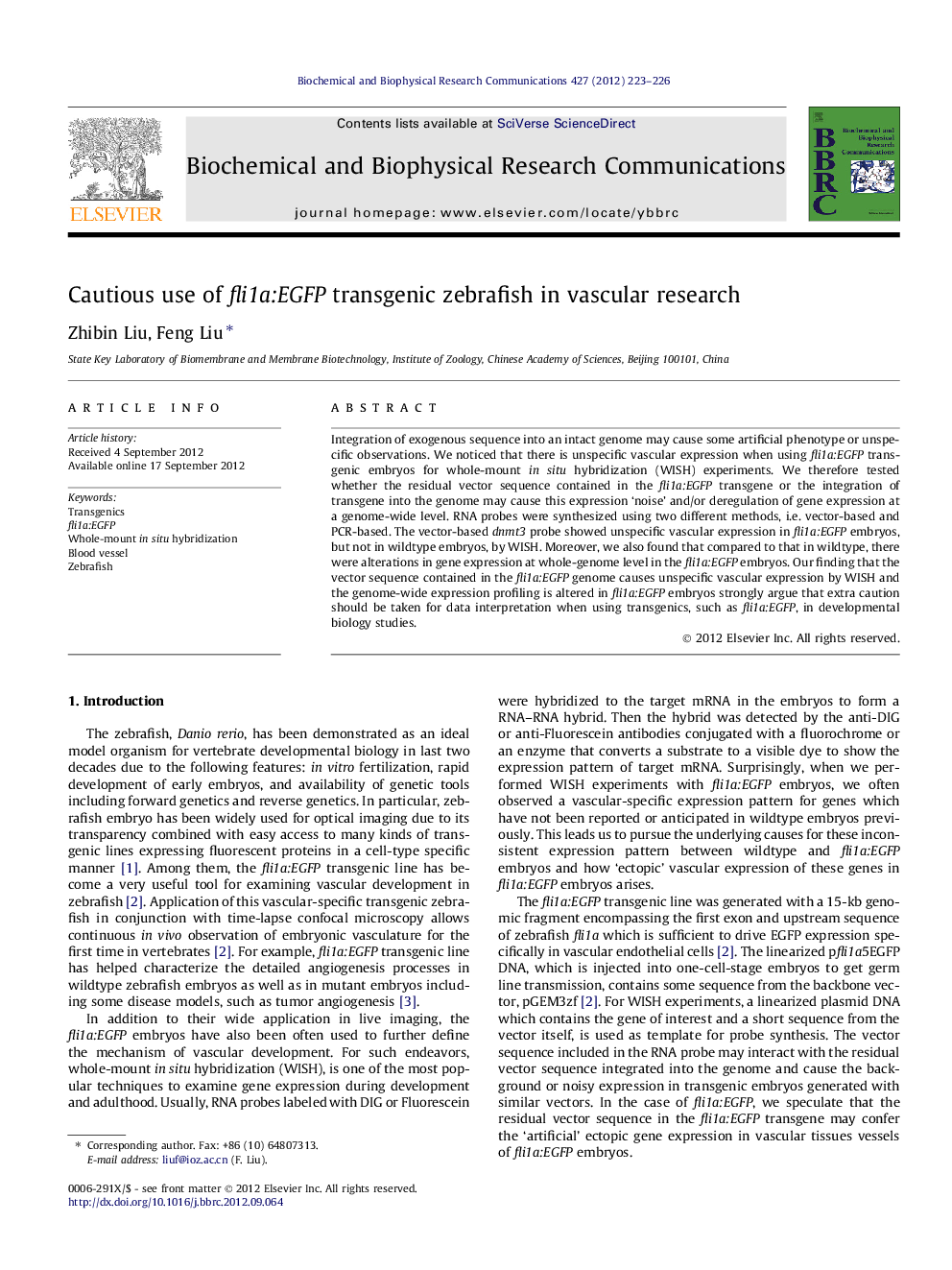| Article ID | Journal | Published Year | Pages | File Type |
|---|---|---|---|---|
| 1929504 | Biochemical and Biophysical Research Communications | 2012 | 4 Pages |
Integration of exogenous sequence into an intact genome may cause some artificial phenotype or unspecific observations. We noticed that there is unspecific vascular expression when using fli1a:EGFP transgenic embryos for whole-mount in situ hybridization (WISH) experiments. We therefore tested whether the residual vector sequence contained in the fli1a:EGFP transgene or the integration of transgene into the genome may cause this expression ‘noise’ and/or deregulation of gene expression at a genome-wide level. RNA probes were synthesized using two different methods, i.e. vector-based and PCR-based. The vector-based dnmt3 probe showed unspecific vascular expression in fli1a:EGFP embryos, but not in wildtype embryos, by WISH. Moreover, we also found that compared to that in wildtype, there were alterations in gene expression at whole-genome level in the fli1a:EGFP embryos. Our finding that the vector sequence contained in the fli1a:EGFP genome causes unspecific vascular expression by WISH and the genome-wide expression profiling is altered in fli1a:EGFP embryos strongly argue that extra caution should be taken for data interpretation when using transgenics, such as fli1a:EGFP, in developmental biology studies.
► RNA probe synthesized using regular plasmid method gave a vascular expression in fli1a:EGFP embryos. ► The 240-bp sequence within the fli1a:EGFP transgene is the cause of the unspecific vessel expression. ► Expression profiling was disrupted in fli1a:EGFP embryos by microarray analysis.
